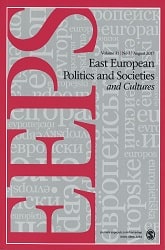Transformations in Prison Subculture and Adjustment to Imprisonment in Post-Soviet Lithuanian Penitentiary Institutions
Transformations in Prison Subculture and Adjustment to Imprisonment in Post-Soviet Lithuanian Penitentiary Institutions
Author(s): Rūta Vaičiūnienė, Artūras TereškinasSubject(s): Governance, Political history, Penology, Transformation Period (1990 - 2010), Post-Communist Transformation, Penal Policy
Published by: SAGE Publications Ltd
Keywords: post-Soviet penitentiary institutions; prison subculture; adaptation to imprisonment; prison reforms;
Summary/Abstract: As in other post-Soviet countries, carceral collectivism characterizes penal institutions in Lithuania. In these institutions, prisoners’ interactions are minimally controlled and convicts are responsible for the maintenance of order; hence, the informal rules of the criminal subculture prevail in Lithuanian correctional facilities. In this article, we examine the prison subculture and adaptation to imprisonment as a significant part of inmates’ social world in post-Soviet Lithuania. By using semi-structured interviews with male prisoners, semi-structured interviews with prison staff, and data from the inmates’ criminal records, we conceptualize both men’s adaptation to imprisonment and current transformations in the Lithuanian prison subculture. As our research shows, the importance of this subculture has decreased in recent years. This process has been influenced by structural changes such as stronger administrative control of convicts, their differentiation and division into smaller groups that limit their mutual contacts, and convicts’ motivation to obtain parole and participate in various rehabilitation programs. The prison subculture has also experienced transformations because of the increasing impact of financial resources on social life, subcultural rules, and interprisoner relationships. Despite these processes, the subculture still plays an important role in inmates’ attempts to choose different daily coping styles and types of adaptation to imprisonment. In this article, we argue that in reforming post-Soviet correctional institutions, a gradual transition to the system of individual cell–type confinement with some remaining elements of collective imprisonment would be desirable.
Journal: East European Politics and Societies
- Issue Year: 31/2017
- Issue No: 03
- Page Range: 659-679
- Page Count: 21
- Language: English
- Content File-PDF

